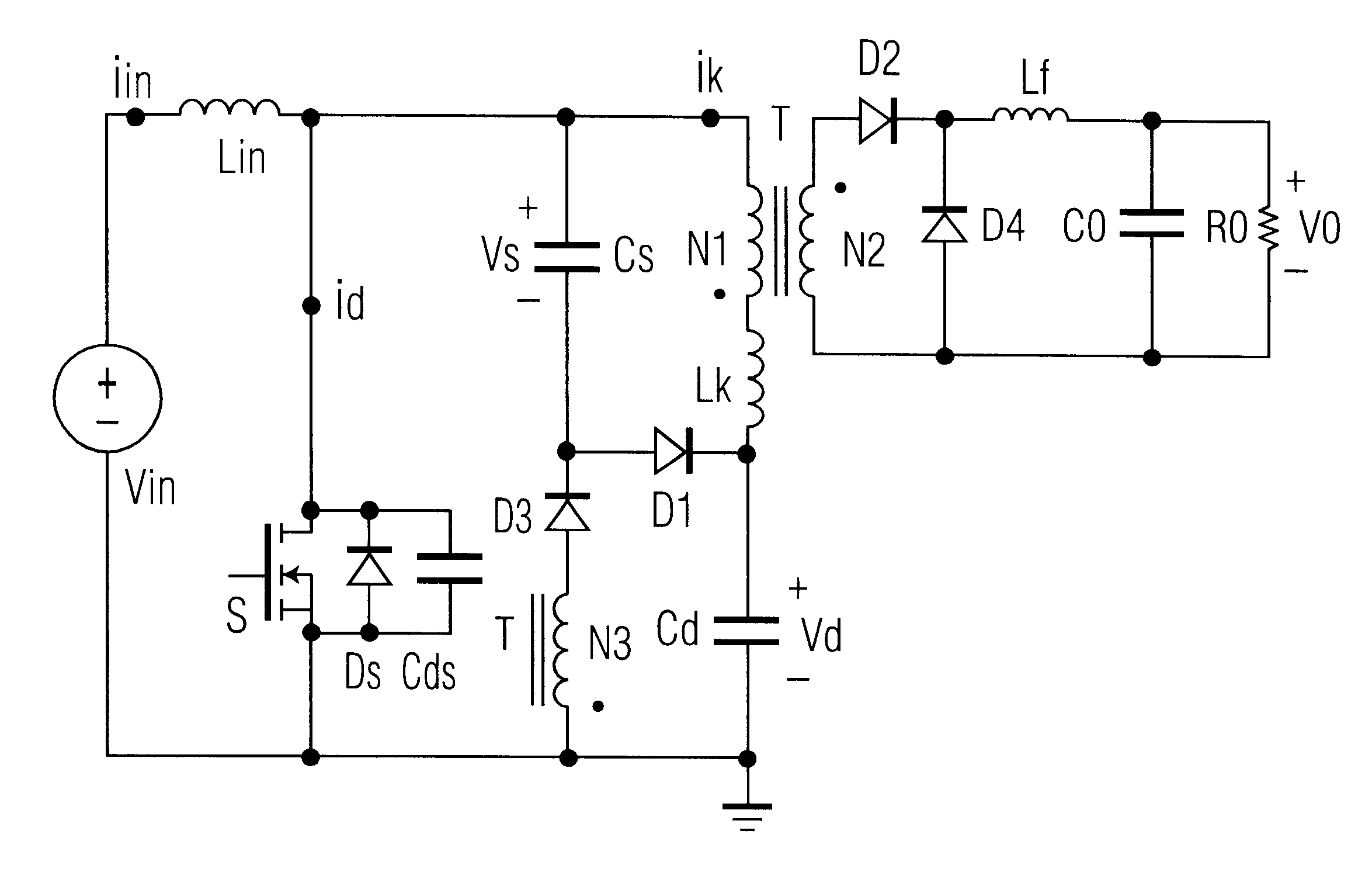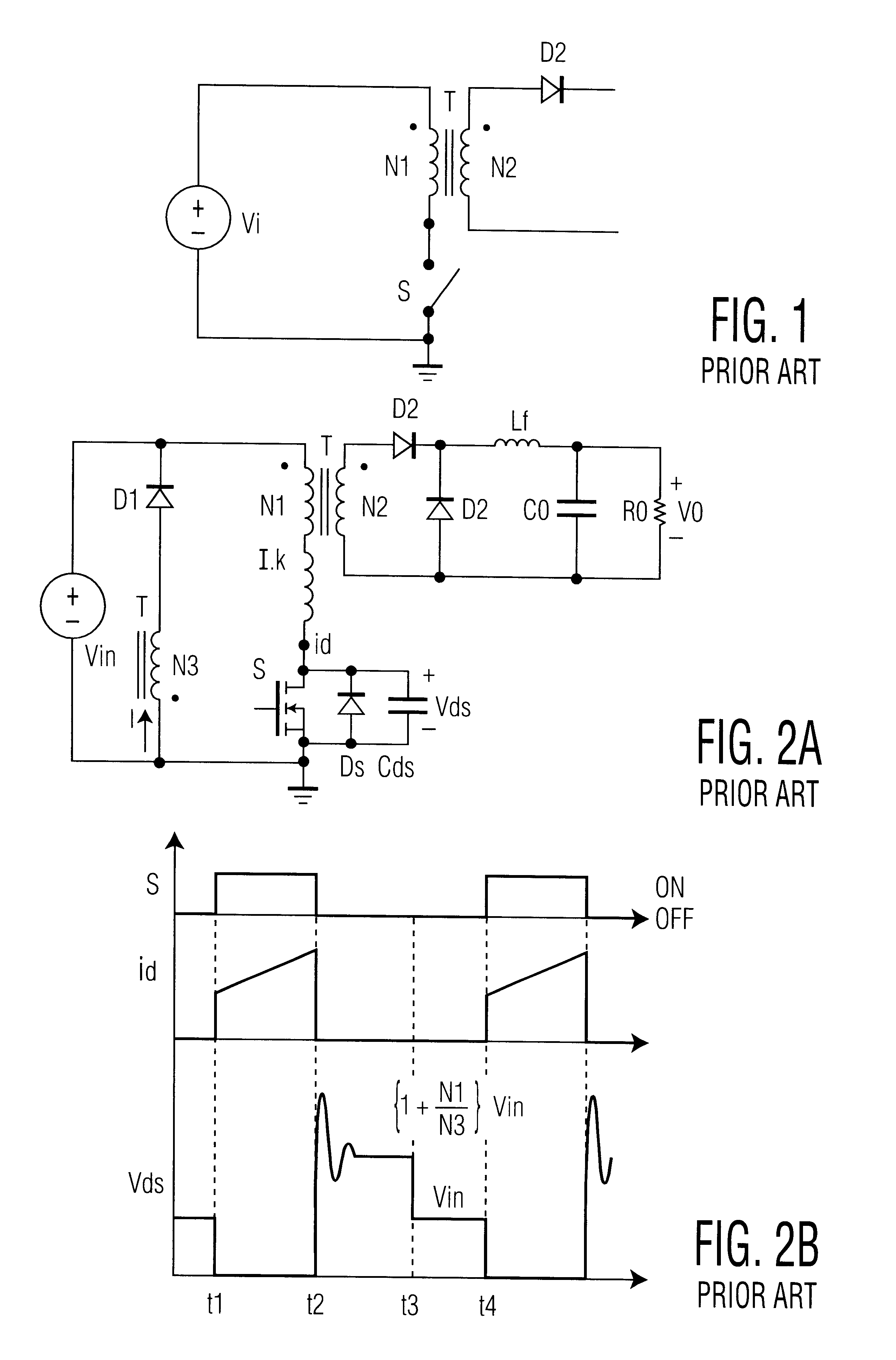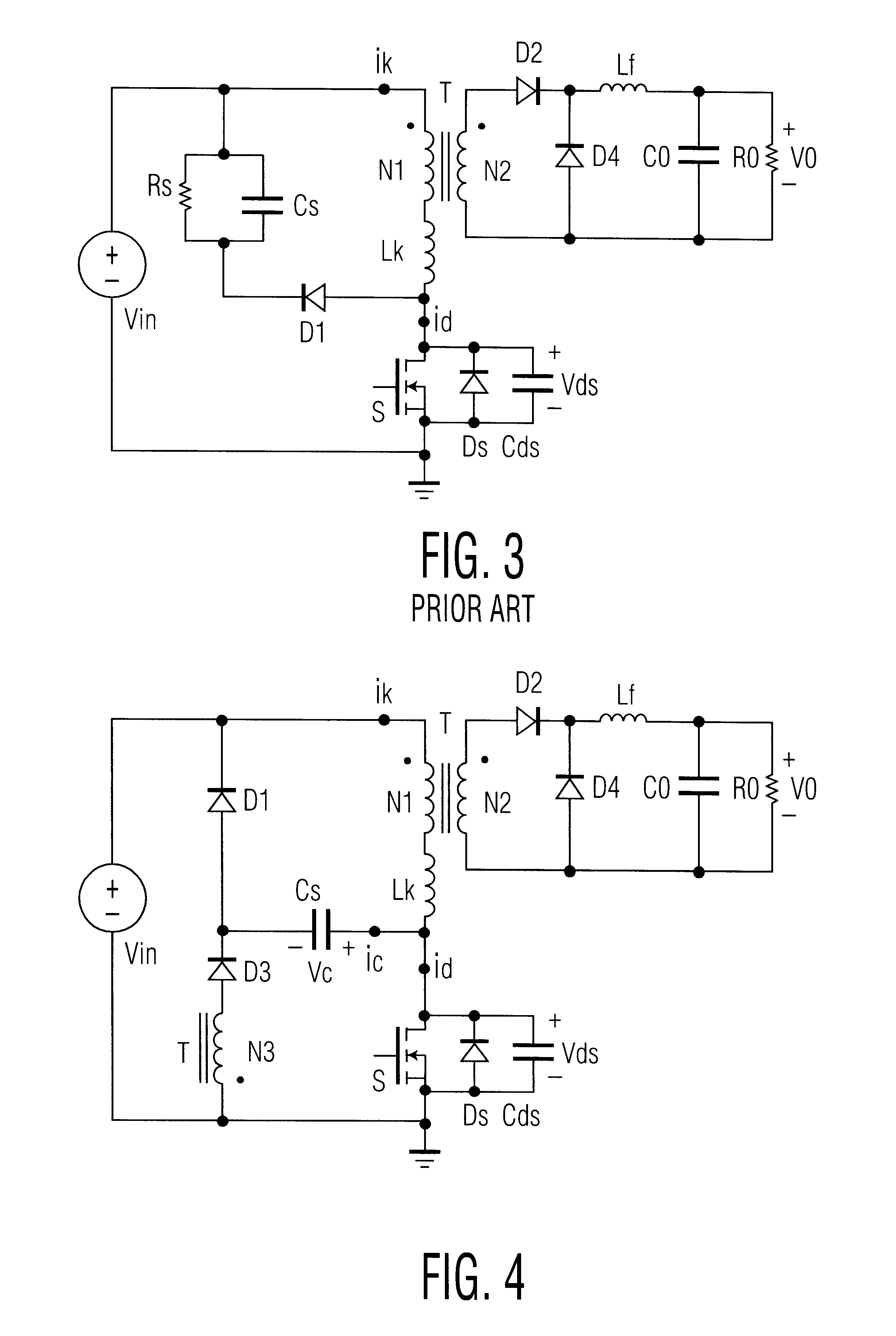Voltage clamping system and method for a DC/DC power converter
a voltage clamping system and power converter technology, applied in the direction of electric variable regulation, process and machine control, instruments, etc., can solve the problems of voltage spike across the power switch, lower conversion efficiency of the converter, loss of energy,
- Summary
- Abstract
- Description
- Claims
- Application Information
AI Technical Summary
Benefits of technology
Problems solved by technology
Method used
Image
Examples
example 2
In accordance with embodiments of the invention, the circuit according to example 1 provides a basis for enhancements, as shown in FIGS. 6 and 7, whose principle of operation is similar to FIG. 4.
When switch S is turned ON, the input source voltage V.sub.in charges inductor L.sub.in, and the input current i.sub.in linearly increases. Capacitor C.sub.s discharges through switch S, diode D3 and winding N3. This discharging current is coupled to the winding N2 to supply the load. At the same time, the voltage V.sub.d is applied to the primary winding N1, and also supplies the load. When switch S is turned OFF, the inductor current i.sub.in charges capacitor C.sub.d through a loop L.sub.in -N1-L.sub.k -C.sub.d -V.sub.in. The leakage energy is transferred to the capacitor C.sub.s through diode D1 and the capacitor voltage V.sub.s is applied to the primary winding N1. When the induced voltage across winding N3 is higher than voltage V.sub.d, diode D3 turns on and the magnetizing energy is...
second embodiment
Since the circuit is a current fed power converter, it is suitable for power factor correction applications. FIG. 7 shows the power factor correction circuit, provided by replacing the V.sub.in with AC line input and a full wave diode bridge rectifier DB as compared with FIG. 6.
PUM
 Login to View More
Login to View More Abstract
Description
Claims
Application Information
 Login to View More
Login to View More - R&D
- Intellectual Property
- Life Sciences
- Materials
- Tech Scout
- Unparalleled Data Quality
- Higher Quality Content
- 60% Fewer Hallucinations
Browse by: Latest US Patents, China's latest patents, Technical Efficacy Thesaurus, Application Domain, Technology Topic, Popular Technical Reports.
© 2025 PatSnap. All rights reserved.Legal|Privacy policy|Modern Slavery Act Transparency Statement|Sitemap|About US| Contact US: help@patsnap.com



